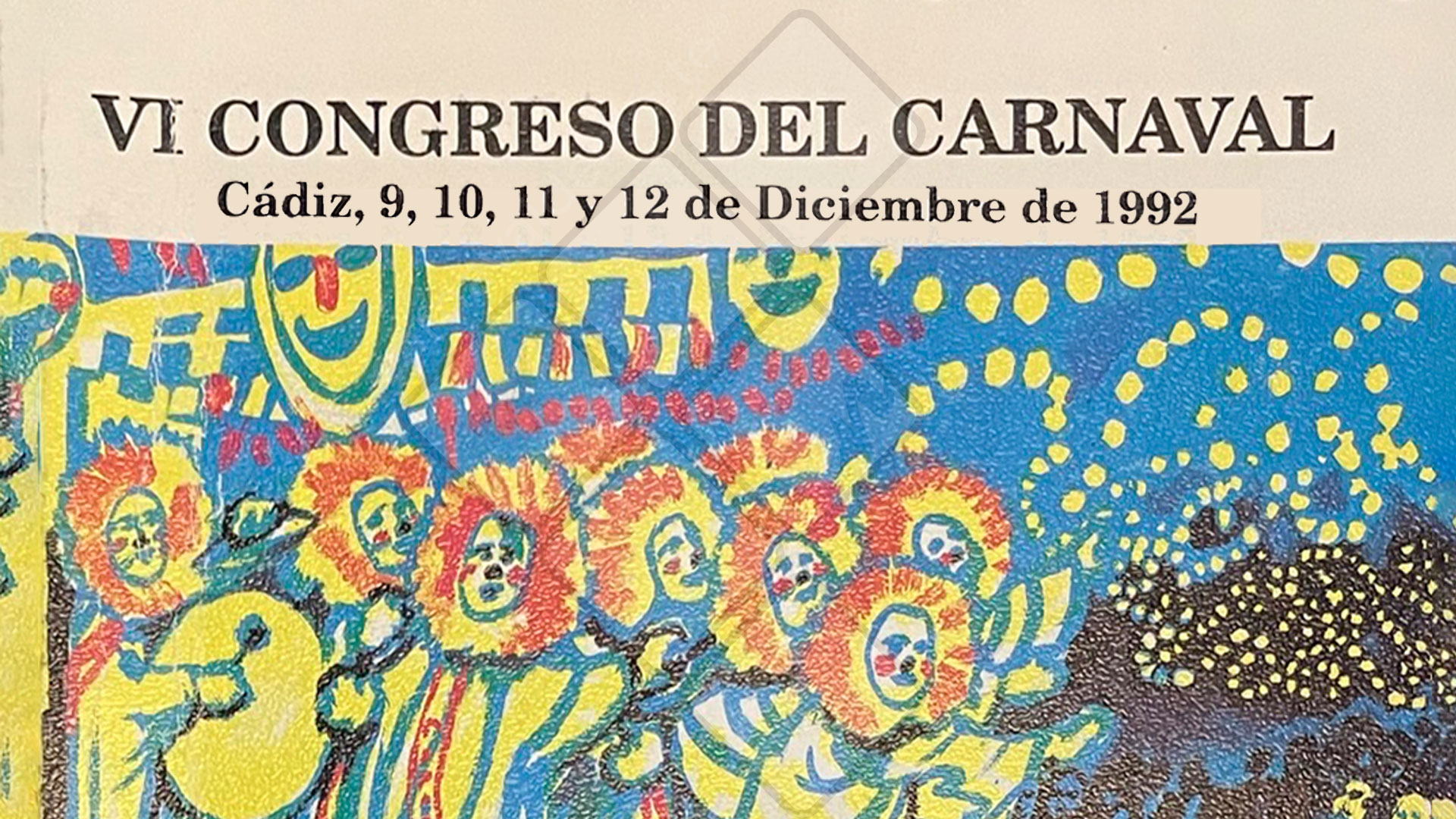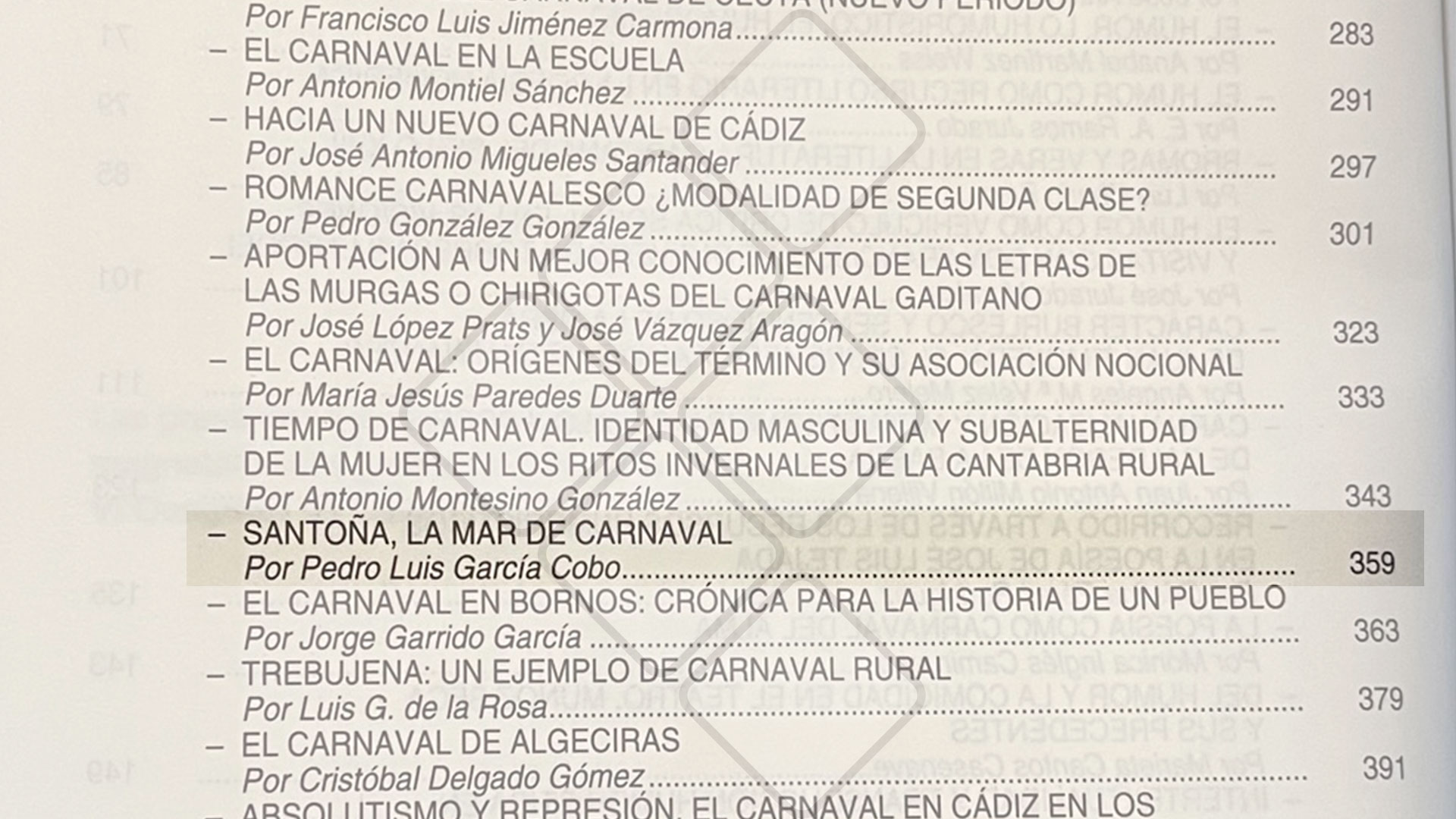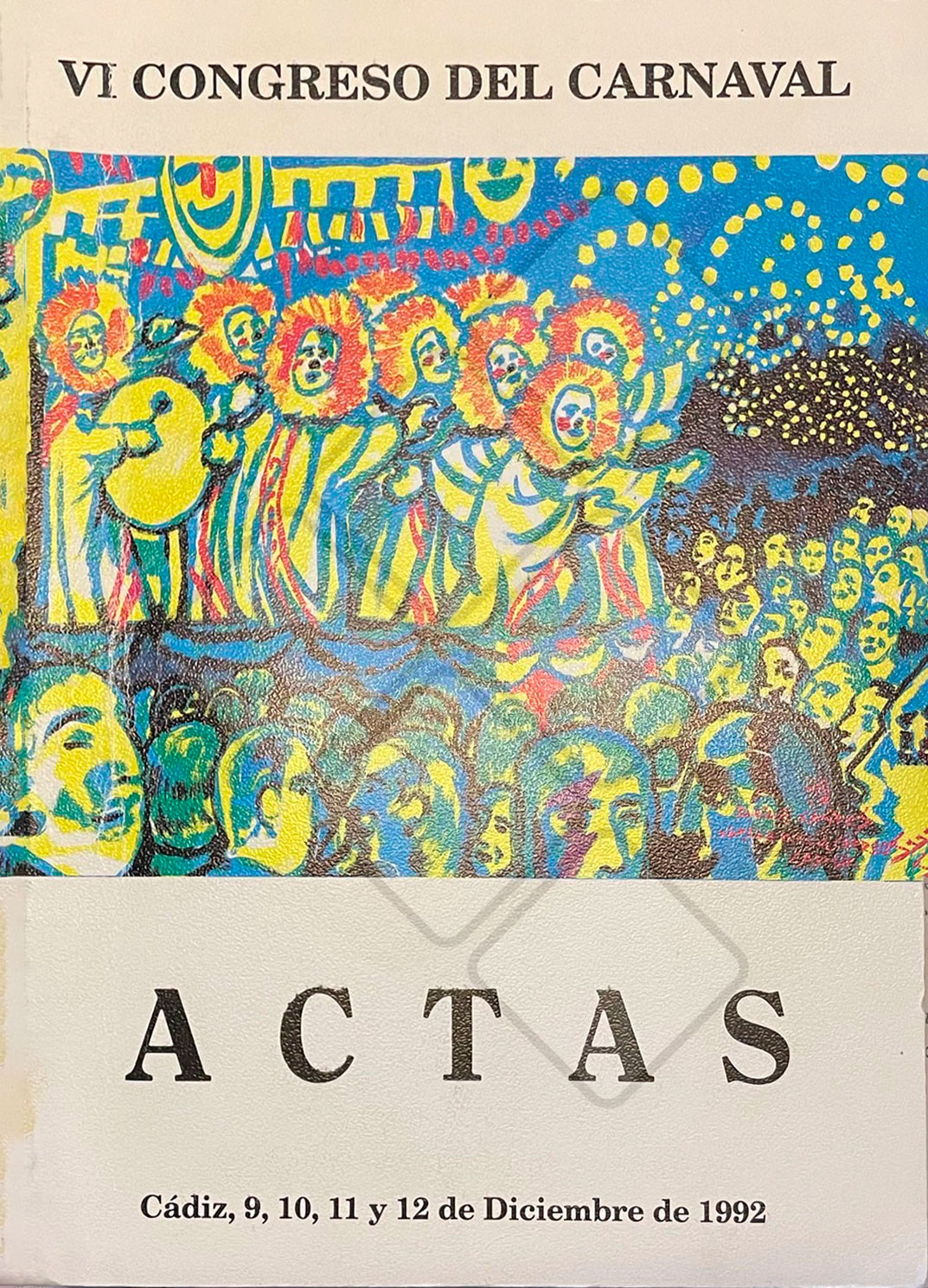

Santoña took part in the carnival congress in Cadiz for the first time as a speaker in 1987, and in 1992 it repeated its participation with the theme: "Santoña, the sea of carnival" with a presentation by the then mayor of Santoña, Pedro Luis García Cobo, which is shown below:
 A quick analysis of the phenomenon of the modern carnival would allow us to distinguish two types of this type of celebrations which have proliferated so much in recent times.
A quick analysis of the phenomenon of the modern carnival would allow us to distinguish two types of this type of celebrations which have proliferated so much in recent times.
On the one hand, today's carnival can be an act of reaffirmation or readaptation of old popular traditions that in some cases date back to the distant Middle Ages. But in many other cases it lacks this component, it is just one more of the many events that make up the annual programme of the local council's festivities department.
Because almost all Spanish municipalities have recently organised their own carnivals as one more festival to offer to the citizens. But these carnivals cannot be identified with those which have a certain identity and historical justification and in which we can and should speak of a festive event, endowed with particular characteristics related to the specificity of the area or place in which it takes place.
The seafaring nature is the most important characteristic of the Santoña carnival. With the representation of the JUDGMENT at the bottom of the sea as its greatest exponent. In the two eras into which history has divided the Santoña carnivals, the sea appears closely linked both in terms of content and images to the carnival representations.
This continuous reference to the sea makes it possible to define the Santoña carnival as a seafaring carnival, insofar as this characteristic differentiates it from other carnival representations that take place in other parts of Spain and the world.
However, the Santoña carnival has other characteristics that are less important and significant because they are not common in other carnivals. These are its popular character on the one hand and its critical-satirical character on the other, both of which are closely related. Popular because the Santoña carnival has acquired extraordinary dimensions in relation to the size and population of the town, with only twelve thousand inhabitants, which implies a very large popular participation. Unlike other carnivals in which a group of groups, "cuadrillas", "murgas" or "comparsas" carry the specific weight of the festival, in Santoña it can be said that the whole town participates in a gigantic costume ball with the street as the stage.
The critical-satirical aspect is manifested on three well-differentiated levels or aspects. The most important takes place through the murgas, which every Friday of Carnival review all the most significant events that have taken place over the course of the year. But also important is the dose of criticism that appears in the costumes of the people themselves, on the one hand, and in the content and dialogue of the representation or staging of the Judgment at the bottom of the sea, on the other.
After this quick description of the three most important aspects that define the Santoña carnival, it is time to review the critical component of the carnival in relation to other types of manifestations of irony, biting and sarcasm that have taken place over the years in the town of Juan de la Cosa.
If in all cases the years of the dictatorship constituted a rupture that significantly affected the carnival celebrations, in Santoña the function of criticism and social control that until then had been embodied in the carnival was channelled through two manifestations:
The custom of fancy dress on the occasion of New Year's Eve on the one hand and the parade of the humorous floats held every year during the month of September on the occasion of the patron saint's festivities of the Virgen del Puerto on the other.
Given the legal impossibility of continuing with these celebrations, which were prohibited throughout Spain, the tradition was continued in Santoña in a somewhat subtle way; because the spirit of carnival was revived in the houses during the Christmas festivities when people began to improvise costumes for the parties that followed the traditional dinners. But mainly when, also on the occasion of Christmas, the custom spread among some groups of friends to go out in costume into the streets singing old popular songs and old carnival murgas. Thus, out of season, the people of Santanyi were able to keep the carnival phenomenon alive. In a latent way and changing its location in the months of the year, the truth is that the Santoña carnival did not disappear completely from the life of the people. In this way, the songs that those groups of friends sang during the Christmas festivities maintained the essence of the carnival murgas, which were definitively recovered in their original form during the 1980s.
But the concept of carnival as satire and criticism of all the events of the past year in the area, the essential function of the carnival murga, can be maintained in its purest form with the organisation of the annual parade of humorous floats on the occasion of the patron saint festivities of the Virgen del Puerto. Groups of friends appear on trucks, wagons or platforms decorated for the occasion, denouncing some situation or event in the village in recent times. The people who have spent weeks making all the decorations for their floats become, at the time of the parade, the protagonists of the events and situations denounced during the parade. In this way, from the 1950s, when this form of popular criticism began to be institutionalised, to the present day, when this event is still the most important of all those held in Santoña during its festivities in September. The parade of floats has always been a mechanism used by the people of Santoña to exercise a certain degree of control over the activity of the public authorities, mainly the municipal and regional authorities.
The spectacular and colourful decorations are accompanied in all cases by representations that the members of the floats perform on the stages that represent the floats, lorries or platforms on which they are exhibited. As the members of each float take part in the same parade every year, it is possible to establish important similarities between the characteristics that define one of these floats and those of the carnival murga. Moreover, since the recovery of modern carnivals in Santoña, these two critical activities have coexisted, and in many cases the same group of friends has participated in both activities, in the murga competition during the carnival and in the float parade during the September festivities. Because the phenomenon of the parade of floats can be perfectly identified with the definition offered by Fernando Gomarín of the comparsa or murga of the carnival, insofar as both are born and developed to entertain and amuse those present, and as a main result record the life of the people of the valley by recounting everything that has been worth highlighting throughout the year, with the inhabitants becoming the protagonists, performers and audience of their own amusement. In short, through these two activities described here, it is possible to justify a certain continuity of the Santoña carnival throughout the years of the carnival ban.
When the popular carnival festival, absent from the streets of Santoña since 1934, was recovered in 1981, all the ingredients that define the carnival festival remained in the memory of the people of Santoña, because the tradition was never completely lost. Without the antecedents of the carnivals of the years of the Second Republic, it would have been difficult to relate the New Year's Eve costumes and the parade of floats in September with the carnival itself.
But it would certainly be daring and adventurous to speak of continuity in the Santoña carnival if it had not been possible to establish bridges between celebrations so far apart in time. However important the carnivals were before the civil war, however great the mark they would have left in the collective memory of the people of Santoña, if the New Year's Eve costumes and the parade of floats in the patron saint's fiestas of the Virgen del Puerto, in September, had not been held during that period of time.